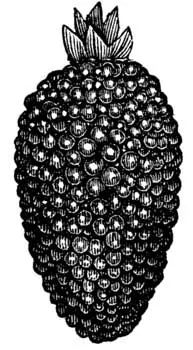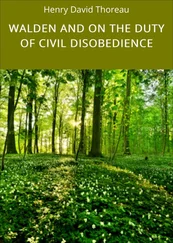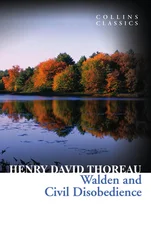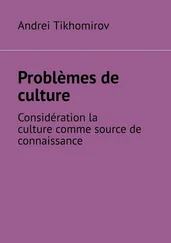J. Walden - Soil Culture
Здесь есть возможность читать онлайн «J. Walden - Soil Culture» — ознакомительный отрывок электронной книги совершенно бесплатно, а после прочтения отрывка купить полную версию. В некоторых случаях можно слушать аудио, скачать через торрент в формате fb2 и присутствует краткое содержание. Жанр: Руководства, Биология, Компьютерное железо, foreign_edu, на английском языке. Описание произведения, (предисловие) а так же отзывы посетителей доступны на портале библиотеки ЛибКат.
- Название:Soil Culture
- Автор:
- Жанр:
- Год:неизвестен
- ISBN:нет данных
- Рейтинг книги:3 / 5. Голосов: 1
-
Избранное:Добавить в избранное
- Отзывы:
-
Ваша оценка:
- 60
- 1
- 2
- 3
- 4
- 5
Soil Culture: краткое содержание, описание и аннотация
Предлагаем к чтению аннотацию, описание, краткое содержание или предисловие (зависит от того, что написал сам автор книги «Soil Culture»). Если вы не нашли необходимую информацию о книге — напишите в комментариях, мы постараемся отыскать её.
Soil Culture — читать онлайн ознакомительный отрывок
Ниже представлен текст книги, разбитый по страницам. Система сохранения места последней прочитанной страницы, позволяет с удобством читать онлайн бесплатно книгу «Soil Culture», без необходимости каждый раз заново искать на чём Вы остановились. Поставьте закладку, и сможете в любой момент перейти на страницу, на которой закончили чтение.
Интервал:
Закладка:
BIRDS
These are exceedingly useful in destroying insects. So of toads and bats. No one should ever be wantonly killed. Boys, old or young, should never be allowed to shoot birds, or disturb their nests, only as they would domestic fowls, for actual use. A wanton recklessness is exhibited about our cities and villages, in killing off small birds, that are of no use after they are dead. Living, they are valuable to every garden and fruit-orchard. In every state, stringent laws should be made and enforced against their destruction. Even the crow, without friends as he is, is a real blessing to the farmer: keep him from the young corn for a few days, as it is easy to do, and, all the rest of the year, his destruction of worms and insects is a great blessing. Birds, therefore, should be baited, fed, and tamed, as much as possible, to encourage them to feel at home on our premises. Having protected our small fruits, they claim a share, and they have not always a just view of the rights of property, nor do they always exhibit good judgment in dividing it. It is best to buy them off by feeding them with something else. If they still prefer the fruit, hang little bells in the trees, where they will make a noise; or hang pieces of tin, old looking-glass, or even shingles, by strings, so that they will keep in motion, and the birds will keep away. Images standing still are useless, as the birds often build nests in the pockets.
BLACKBERRY
This berry grows wild, in great abundance, in many parts of the country. It has been so plentiful, especially in the newer parts, that its cultivation has not been much attended to until recently. Like all other berries, the cultivated bear the largest and best fruit.
Uses. —It is one of the finest desert berries; excellent in milk, and for tarts, pies, &c. Blackberries make the best vinegar for table use, and a wine that retains the peculiar flavor, and of a beautiful color.
This berry comes in after the raspberries, and ripens long in succession on the same bush.

High-bush Blackberry.
Varieties of wild ones, usually found growing in the borders of fields and woods, are the low-bush and the high-bush. Downing gives the first place to the low. Our experience is, that the high is the best bearer of the best fruit. We have often gathered them one and one fourth inches in length, very black, and of delicious sweetness. The low ones that have come under our observation have been smaller and nearer round, and not nearly so sweet.
The best cultivated varieties are—
The Dorchester—Introduced from Massachusetts, and a vigorous, large, regular bearer.
Lawton, or New Rochelle.—This is the great blackberry of this country, by the side of which, no other, yet known, need be cultivated. It is a very hardy, great grower. It is an enormous bearer of such fruit that it commands thirty cents per quart, when other blackberries sell for ten. On a rather moist, heavy loam, and especially in the shade, its productions are truly wonderful. Continues to ripen daily for six weeks.
Propagation is by offshoots from the old roots, or by seeds. When by seeds, they should be planted in mellow soil, and where the sun will not shine on them between eight and five o'clock in hot weather. In transplanting, much care is requisite. The bark of the roots is like evergreens, very tender and easily broken, or injured by exposure to the atmosphere; hence, take up carefully, and keep covered from sun and air until transplanted. This is destined to become one of the universally-cultivated small fruits—as much so as the strawberry. The best manures are, wood-ashes, leaves, decayed wood, and all kinds of coarse litter, with stable manure well incorporated with the soil, before transplanting. Animal manure should not be very plentifully applied.
We have seen in Illinois a vigorous bush, and apparently good bearer, of perfect fruit—a variety called white blackberry . The fruit was greenish and pleasant to the taste.
BLACK RASPBERRY
The common wild, found by fences, especially in the margin of forests, in most parts of the United Sates, is very valuable for cultivation in gardens. Coming in after the red raspberry, and ripening in succession until the blackberry commences, it is highly esteemed. Cultivated with little animal manure, but plenty of sawdust, tan-bark, old leaves, wood, chips, and coarse litter, it improves very much from its wild state. Fruit is all borne on bushes of the previous year's growth; hence, after they have done bearing, cut away the old bushes. To secure the greatest yield on rich land, cut off the tops of the shoots rising for next year's fruit, when they are four or five feet high. The result will be, strong shoots from behind all the leaves on the upper part of the stalk, each of which will bear nearly as much fruit as would the whole have done without clipping. A dozen of these would occupy but a small place in a border, or by a wall. Not an American garden should be found without them.
BONES
Bones are one of the most valuable manures. They yield the phosphates in large measure. On all land needing lime, they are very valuable. The heads, &c., about butchers' shops will bear a transportation of twenty miles to put upon meadows. Break them with the head of an axe, and pound them into the sod, even with the surface. They add greatly to the products of a meadow. Ground, they make one of the best manures of commerce. A cheap method for the farmer is to deposite a load of horse-manure, and on that a load of bones, and alternate each, till he has used up all his bones. Cover the last load of bones deep with manure. It will make a splendid hotbed, and the fermentation of the manure will dissolve or pulverize the bones, and the heap will become one mass of the most valuable manure, especially for roots and vines, and all vegetables requiring a rich, fine manure.
BORECOLE, OR KALE
There are some fifteen or twenty kinds cultivated in Europe. Two only, the green and the brown, are desirable in this country. Cultivate as cabbage. In portions of the middle states they will stand the frosts of winter well, without much protection; further north, they need protection with a little brush and straw during severe frosts. Those grown on rather hard land are better for winter; being less succulent, they endure cold better. Cut them off for use whenever you choose. They do not head like cabbage; they have full bunches of curled leaves. Cut off so as to include all, not over eight inches long. In winter, after having been pretty well exposed to the frost, they are very fine. Set out the stumps early in spring, and they will yield a profusion of delicious sprouts. This would be a valuable addition to many of our kitchen gardens.
BROCCOLI
This may be regarded as a late flowering species of cauliflower. It should be planted and treated as cabbage, and fine heads will be formed, in the middle states, in October: at the South much earlier, according to latitude. Take up in November, and preserve as cabbage, and good ones may be had in winter. To prevent ravages of insects, mix ashes in the soil when transplanting, or fresh loam or earth from a new field; or trench deep, so as to throw up several inches of subsoil, which had not before been disturbed.
To save seed, transplant some of the best in spring; break off all the lower sprouts, allowing only a few of the best centre ones to grow. Tie them to stakes, to prevent destruction by storms. Be sure to have nothing else of the cabbage kind near your seed broccoli.
Читать дальшеИнтервал:
Закладка:
Похожие книги на «Soil Culture»
Представляем Вашему вниманию похожие книги на «Soil Culture» списком для выбора. Мы отобрали схожую по названию и смыслу литературу в надежде предоставить читателям больше вариантов отыскать новые, интересные, ещё непрочитанные произведения.
Обсуждение, отзывы о книге «Soil Culture» и просто собственные мнения читателей. Оставьте ваши комментарии, напишите, что Вы думаете о произведении, его смысле или главных героях. Укажите что конкретно понравилось, а что нет, и почему Вы так считаете.












